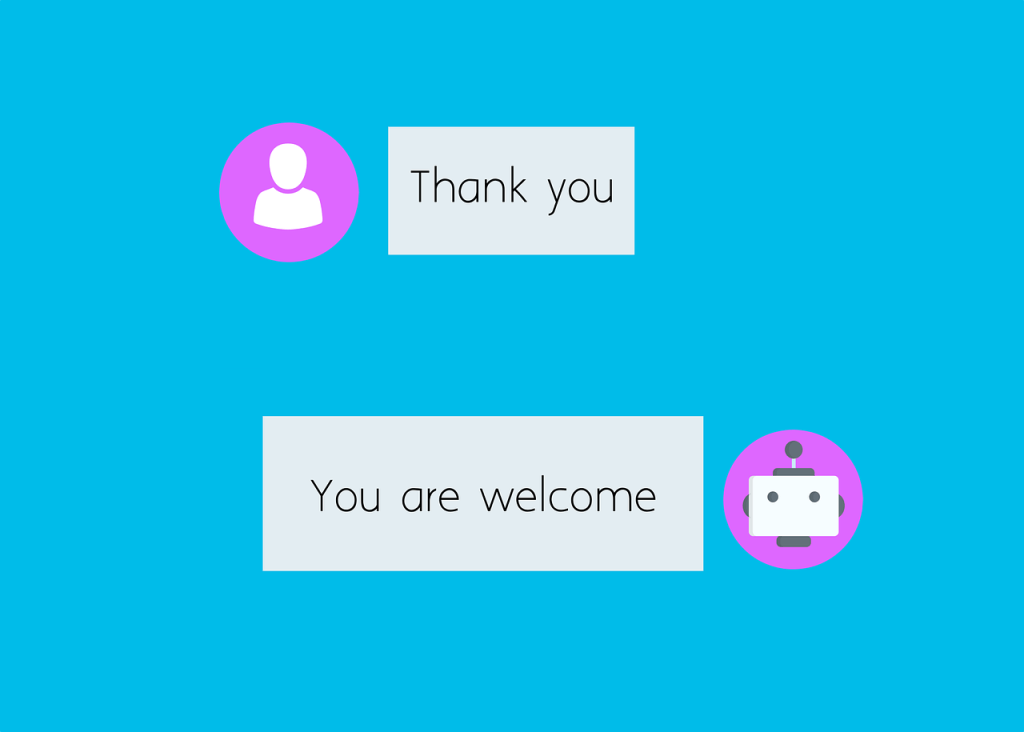After reading this article, you’ll:
- Understand the business benefits of integrating voice and chatbot technology, including 24/7 customer service, cost savings of up to 30%, faster resolution times, and increased sales conversions by approximately 15%.
- Learn the technical considerations for implementing conversational AI in mobile apps, including NLP engine selection, speech recognition integration, backend connectivity, and multimodal interface design that combines voice with visual elements.
- Recognize common implementation challenges and their solutions, such as improving natural language understanding, ensuring data privacy and security, building user trust with transparent design, and maintaining accurate content through proper governance processes.

The way users interact with mobile apps is evolving rapidly with the rise of conversational AI – voice assistants and chatbots that enable natural, two-way communication. Businesses are increasingly looking to embed these technologies into their mobile apps to enhance user experience, improve engagement, and gain a competitive edge.
In fact, nearly 45% of U.S. adults would like their favorite apps to offer voice-interactive features, and a majority of consumers appreciate the 24/7 availability and quick answers that AI chat interfaces provide. This article explores the latest trends, statistics, and best practices for integrating voice and chatbot technology into mobile apps – covering the benefits for businesses and users, technical considerations, business impact, challenges (with solutions), and future trends in conversational AI.
Benefits of Voice and Chatbot Integration for Businesses and Users
Implementing voice and chatbot features in mobile apps can deliver significant advantages for both companies and their customers:
24/7 Customer Service and Cost Savings
Chatbots allow businesses to offer round-the-clock support without human agents on duty at all hours. Customers can get instant answers to common questions at any time – a feature 64% of consumers cite as the most helpful aspect of chatbots. For businesses, this translates to efficiency and lower support costs. Studies show chatbots can help businesses save up to 30% of customer support costs by handling routine inquiries. In fact, AI chatbots today can answer up to 80% of standard questions on their own, freeing up human staff to tackle more complex issues.
Faster Resolutions and Higher Satisfaction
Users value getting quick, convenient help. Around 69% of consumers prefer chatbots for quick replies to simple questions. Instead of waiting for email or phone support. As a result, companies adopting chatbots have seen improvements in service speed – 90% of businesses report faster complaint resolution after implementing chatbots. When implemented well, these conversational interfaces can keep customers happy: 80% of customers who have used chatbots report the experience as positive. Instant, self-service answers lead to less frustration and higher satisfaction.
Convenience and Accessibility
Voice interfaces, in particular, offer unparalleled convenience in mobile contexts. Speaking is a natural form of interaction that can be much faster than typing on a small touchscreen – humans can speak 3 to 5 times as fast as they can type. This speed makes voice commands ideal for performing tasks on the go or when hands/eyes are occupied (e.g. driving or cooking). Voice control also improves accessibility for users who have difficulty with touch interfaces, such as older adults or those with disabilities.
It’s telling that some of the heaviest voice technology users are on opposite ends of the age spectrum: under-15 and over-65 users find voice interfaces especially useful, since older users often find typing slow or cumbersome. By offering voice input as an option, apps can better serve these groups and provide a more inclusive user experience.
Personalization and Engagement
Chatbots and voice assistants can leverage user data to personalize interactions. They can remember user preferences, recommend content or products, and guide users through decisions in a conversational manner. For example, AI assistants in e-commerce apps help shoppers find suitable products and even reduce cart abandonment by re-engaging users – boosting online store revenues by an estimated 7–25% when used effectively.
Likewise, in banking apps, a virtual assistant can proactively provide personalized insights (like spending summaries or budget tips), which not only adds value for the user but also increases engagement with the app’s features. These personalized, interactive experiences keep users more engaged and loyal to the brand.
Competitive Differentiation
Embracing conversational AI in mobile apps can set a business apart from competitors. Early adopters of voice and chat interfaces have an opportunity to establish themselves as innovators and capture consumers who are seeking these modern conveniences. Industry experts compare the current wave of voice technology adoption to the early days of mobile apps themselves – companies that embrace voice interfaces now can gain a significant competitive advantage, similar to how the first movers in mobile apps reaped benefits over laggards.
Offering a smooth chatbot or voice assistant experience can be a selling point that attracts customers to your app over a competitor’s. Notably, more than 50% of customers now expect businesses to be available 24/7 in some capacity, and adding an AI assistant is one way to meet that expectation and stand out.
Higher Conversion and Sales
When deployed in the right way, conversational agents can also drive business results like lead generation and sales. Chatbots can proactively reach out to app users (or website visitors) to assist or offer promotions, yielding higher conversion rates. For instance, AI-powered proactive chat engagements have been shown to increase conversion rates by around 15% on average.
In the retail sector, analysts projected that consumers would spend over $140 billion via chatbots in 2024, a huge leap from just $2.8 billion in 2019, underscoring how these assistants are influencing purchase behavior. Whether it’s booking a service, ordering a product via a voice command, or upselling users with personalized suggestions in chat, these interfaces can open new revenue streams.
Real-World Example – Starbucks and Bank of America
 Many leading brands have already seen success with voice/chatbot integration. Starbucks introduced a voice-ordering assistant in its app as early as 2017, allowing customers to order coffee by voice with complex, detailed customizations (e.g. “a double upside-down macchiato half-decaf… in a grande cup”) and then receive a pickup time. The convenience of ordering by voice boosted customer engagement for Starbucks.
Many leading brands have already seen success with voice/chatbot integration. Starbucks introduced a voice-ordering assistant in its app as early as 2017, allowing customers to order coffee by voice with complex, detailed customizations (e.g. “a double upside-down macchiato half-decaf… in a grande cup”) and then receive a pickup time. The convenience of ordering by voice boosted customer engagement for Starbucks.
In finance, Bank of America’s Erica virtual assistant (accessible via voice or text in their mobile app) is often cited as an industry leader. Erica helps customers manage accounts, view insights, and even perform transactions via conversation. Since its 2018 launch, Erica has handled over 1.9 billion interactions from Bank of America clients, and usage continues to rise – in 2023 alone it saw 673 million interactions (a 28% year-over-year increase) and reached 18.5 million active users.
That means nearly half of BofA’s mobile banking customers now regularly use the chatbot/voice assistant interface. Results like these demonstrate the tangible business benefits (higher engagement and efficiency) that a well-designed conversational assistant can deliver.
Technical Considerations for Development
Integrating voice and chatbot capabilities into a mobile app requires careful planning of both the technology stack and the user experience design. Here are key technical considerations and best practices for development:
Natural Language Processing (NLP) Engine
At the heart of any chatbot or voice assistant is the NLP system that understands user inputs and formulates responses. Developers must choose between building a custom conversational AI model or using established platforms (such as Google Dialogflow, Microsoft Bot Framework, IBM Watson Assistant, Amazon Lex, or open-source frameworks like Rasa). Modern best practice leans toward leveraging powerful large language models (LLMs) to improve understanding of user intent.
Recent advances in AI have made it much easier for bots to interpret varied phrasing and context – “LLMs excel at interpreting human intent, addressing a long-standing challenge in voice technology implementation.” For example, integrating a generative AI model (like GPT) can enable more fluid, human-like conversations, but this must be balanced with control to keep the dialogue on track for your use case.
Speech Recognition and Voice Tech
 For voice-enabled apps, robust Automatic Speech Recognition (ASR) is essential to convert spoken words into text the system can understand. Developers can use cloud-based services (Google Speech-to-Text, Amazon Transcribe, etc.) or increasingly leverage on-device speech recognition. Notably, voice technology has seen breakthroughs in on-device processing – new algorithms and dedicated AI chips allow transcription to happen locally on the phone, which reduces latency and improves privacy by not sending audio to the cloud.
For voice-enabled apps, robust Automatic Speech Recognition (ASR) is essential to convert spoken words into text the system can understand. Developers can use cloud-based services (Google Speech-to-Text, Amazon Transcribe, etc.) or increasingly leverage on-device speech recognition. Notably, voice technology has seen breakthroughs in on-device processing – new algorithms and dedicated AI chips allow transcription to happen locally on the phone, which reduces latency and improves privacy by not sending audio to the cloud.
Both Apple and Google have invested heavily in on-device voice tech; Apple’s latest Apple Intelligence features indicate that multimodal voice interactions will be directly supported in iOS for developers. When implementing voice, also consider Text-to-Speech (TTS) if your assistant will talk back to the user. TTS voices have become more natural-sounding, including options to use branded voices or even AI-generated custom voices to fit your app’s persona.
Integration with Device and OS
Tightly integrate the voice/chat functionality with mobile OS capabilities. On iOS, for example, SiriKit and App Intents can be used to let users invoke app actions via Siri (“Hey Siri, order my usual from Starbucks”). On Android, Voice Interaction APIs or Google Assistant integration can achieve similar capabilities.
Even without invoking the OS’s assistant, your app can include a microphone button for voice input and use the OS speech APIs. Make sure to handle permissions properly – apps must request microphone access explicitly and reassure users their audio is being used only for providing the service. Additionally, optimize for mobile constraints: a voice assistant in a mobile app likely shouldn’t be “always listening” (to preserve battery and privacy), so design a clear trigger (tap or wake-word) for voice input.
Backend and API Connectivity
A chatbot or voice assistant in an app is only as useful as the tasks it can perform or information it can retrieve. Thus, integration with your backend systems, databases, and third-party APIs is critical. Most mobile voice/chatbots will act as a layer over existing services – for example, a banking bot needs to query account info and execute transfers via the bank’s API.
Ensure your backend has the necessary APIs/endpoints for the bot to call, and that they respond quickly. If a function is available in the app’s normal UI (say, checking order status or booking an appointment), expose it to the conversational interface as well.
Experts note that companies often already have much of the needed functionality in place, and the voice/chat interface simply needs to tie into those existing APIs securely. Robust integration is a must for transactional assistants that go beyond simple Q&A.
Data Management and Training
A successful chatbot requires a well-prepared knowledge base and training data. You should aggregate the common questions, support issues, or tasks users need, and make sure the bot is trained to handle those with high accuracy. Data quality is paramount – ensure any FAQ content, product info, or policy data the bot draws on is up-to-date and accurate.
Outdated information will lead to wrong answers and frustrated users. Implement processes to regularly update the bot’s knowledge repository and retrain NLP models as needed (especially if your offerings or policies change). Many companies start by mining call center logs or support chat transcripts to understand what users ask most often, which helps define the chatbot’s scope and “frequently asked questions” coverage.
During development, test the bot on diverse phrasing to improve its ability to handle synonyms, slang, and regional language variations. Remember that training is not one-and-done – continuous learning and refinement will greatly improve the assistant over time.
Multimodal Interface Design
One best practice that has emerged is to design multimodal interactions, combining voice, text, and visual elements for the optimal user experience. Rather than a pure voice-only assistant, mobile apps should blend voice with on-screen responses. For instance, if a user asks a question by voice, the app can display the answer as text or graphics while also reading it out, allowing faster comprehension and reference. Multimodal design addresses many limitations of voice-only interfaces – users get the convenience of speaking but also the clarity of visual feedback.
This approach recognizes that voice works best in tandem with traditional UI. Additionally, include textual chatbot UI for times when speaking isn’t feasible (noisy environments or privacy concerns). Giving users the flexibility to either talk or type and to consume information visually or audibly makes the experience far more robust.
Conversation Design and Context
Building a conversational interface isn’t just a technical project – it requires conversation design skills. Map out dialog flows, likely user questions/intents, and how the bot should respond. Design the bot’s tone and personality to align with your brand (friendly, formal, witty?). Importantly, handle context: if the user says “I want to book a flight” and then says “for tomorrow morning” in the next sentence, the bot should connect those inputs.
Modern NLP platforms support context variables or session memory to enable multi-turn conversations that actually make sense. Also define how the bot will handle uncertainties – if it didn’t understand, will it ask clarifying questions? It’s good practice to set clear expectations with users (e.g. the first time, briefly mention “I can help you with tracking orders, finding products, and more”). This helps users know what the assistant can or cannot do, reducing frustration.
Privacy and Security
Privacy considerations are critical when implementing conversational AI. Voice and chat interfaces often deal with personal data, so encryption and secure handling of data is a must. Transmitted audio or chat text should use HTTPS/TLS. If using cloud speech services, understand what data might be stored on the provider’s servers. Many users have reservations about voice assistants “always listening,” so reassure them by being transparent: perhaps include a visible indicator when the microphone is active and clarify in your privacy policy how voice data is used.
Also, give users control – for example, some may prefer typing over voice for sensitive info like passwords or health data. Designing with a privacy-first mindset (only collecting necessary data, allowing opt-outs, complying with regulations like GDPR) will build trust in your AI assistant. Security is equally important: a chatbot that can access account info or perform actions should authenticate the user appropriately (leveraging the app’s login state or additional verification for high-risk transactions). Treat the chatbot like any other entry point to your system – with proper access controls and thorough testing to prevent misuse or fraud.
Performance and Scalability
Users expect instant responses from AI assistants. Thus, performance optimization is key – from speech recognition speed to the NLP response time. Utilize background threads for processing so the app UI stays responsive. If using cloud NLP APIs, minimize network latency with efficient request handling, and consider caching frequent answers. As usage grows, the infrastructure behind the chatbot (servers or cloud functions) should scale to handle concurrent conversations.
Load testing your chatbot service helps ensure it won’t buckle under heavy load (for example, a sudden spike of users asking the chatbot about a breaking news event). Also, plan for offline or poor connectivity scenarios: if the app can’t reach the server, maybe allow certain basic queries offline or at least handle it gracefully (“I’m having trouble connecting right now”). The technical architecture (mobile client + cloud services + possibly on-device models) should be robust and fault-tolerant to give users a reliably snappy experience.
Testing and Iteration:
Testing a conversational UI is an ongoing process. Do internal testing with team members using a wide range of speech accents and phrasing for voice input. Conduct beta tests with real users to see how they naturally interact – they will likely type or say things you didn’t anticipate. Use those transcripts to refine the bot.
Pay special attention to error handling: when (not if) the bot misunderstands something, does the app handle it gracefully? Perhaps it can say, “Sorry, I didn’t catch that. Could you rephrase?” or offer a menu of things it can do. Also test the handoff to humans – if the chatbot is for customer support, ensure that when it cannot help, it can seamlessly transition the user to a live chat or phone call with context of the conversation.
Finally, measure outcomes during testing (success rate of answering questions, time to complete tasks, user feedback ratings) and use those metrics to guide improvements. A conversational feature is never truly “finished” – the best implementations treat it as a living system that is continually updated based on analytics and user feedback.
By addressing these technical and design considerations, businesses can build voice and chatbot integrations that are not only technically sound but also genuinely user-friendly.
Challenges and Solutions in Implementation
While the benefits are compelling, integrating conversational AI into mobile apps is not without challenges. Businesses must be mindful of potential pitfalls and plan solutions to ensure a successful implementation. Here are some common challenges and how to address them:
Natural Language Understanding Difficulties
Human language is complex, and chatbots can struggle with understanding intent, especially if users phrase things in unexpected ways or use slang/idioms. Ambiguity and variety in user input remains a primary technical challenge. For example, a travel app’s bot might get confused if a user says “Book me a ticket to Paris next Friday” when there are multiple flights and options to clarify. Solution: Limit the scope initially to well-defined intents and expand gradually as the NLP model learns.
Leverage advanced AI models that have been trained on massive language datasets to improve understanding. Incorporate a dialogue management strategy – if the bot isn’t sure what the user means, have it ask a clarifying question (“Do you mean Paris, France or Paris, Texas?”). Continuous training is key: use real interaction logs to retrain and refine the language model so it gets better over time in interpreting your users’ vernacular. Also, provide escape hatches – if the bot is really lost, it should admit it rather than give a wrong answer, and perhaps offer to connect to a human agent or present a menu of options.
Speech Recognition Accuracy
For voice interfaces, accurately transcribing the user’s speech is the first hurdle. Background noise, accents, and speech clarity can all affect recognition. A thick accent or an uncommon name can lead to errors that frustrate the user. Solution: Use high-quality ASR engines and consider allowing the user to correct via voice or text if a mistake occurs (e.g., displaying what the assistant heard and letting the user tap to edit it).
The technology has improved greatly – cloud speech services boast high accuracy, and as noted earlier, on-device speech models coupled with LLMs now offer near real-time, highly accurate transcription. It can also help to train custom voice models if your app deals with a lot of domain-specific vocabulary (like medical terms or product names). For noisy environments, implement a push-to-talk button rather than always listening, so the user can speak when ready in a clearer setting. Ultimately, combining voice with visual feedback (multimodal) also mitigates this – showing text of what was understood gives users confidence or an opportunity to correct misheard input.
Integration Complexity
Plugging a new conversational interface into existing mobile architecture and business systems can be complex. It often requires coordination between app developers, backend engineers, and sometimes third-party AI providers. Solution: To ease the integration burden, consider using modular SDKs or middleware specifically designed for chat/voice in apps. Several providers offer drop-in chatbot/voice assistant SDKs that handle the heavy lifting of voice capture, streaming to an NLP service, and returning responses.
Ensure this layer can interface with your APIs securely. Plan the project with a cross-functional team – involve your backend/API team early to make sure the necessary endpoints are in place, and involve UX designers to create the conversation flows alongside the technical integration. Starting with a pilot or a single use-case can help iron out integration challenges on a small scale before expanding the assistant’s capabilities across your app.
Data Privacy and Security Concerns
Anytime an AI is handling user data (especially voice data which can be sensitive), privacy and security concerns arise. Users might worry: Is my phone always listening? Where is this data going?. Companies themselves need to protect against leaks or misuse of conversation data. Solution: Be transparent and give control to users. Clearly communicate your privacy practices – e.g. “Your voice commands are used to help our app serve you, and audio is not stored beyond the current session” (if true).
For sensitive scenarios, give users a choice to type instead of speak, as many prefer typing for sensitive info to avoid being overheard. On the backend, apply strong encryption to any stored transcripts, or avoid storing full transcripts if not needed (analyze them in memory and record only necessary metadata). Ensure compliance with relevant regulations (financial apps might need to log certain communications, healthcare apps must follow HIPAA, etc.).
Security measures such as user authentication, session timeouts, and input sanitization (to avoid any injection attacks via chat input) remain important. By prioritizing privacy/security in design – essentially following a “privacy by design” approach – you can alleviate user apprehension and protect your brand. In user studies, privacy has been a significant factor in trust; for instance, concerns about always-on listening and data misuse have contributed to declining trust in general voice assistants over the years. Address this head-on to ensure your conversational AI doesn’t face the same skepticism.
User Adoption and Trust
Even if you build a great chatbot or voice feature, some users may be hesitant to use it, either due to habit or past bad experiences with bots. There is often user apprehension with automated customer service – people worry the bot won’t understand them or can’t truly solve their issue. A single negative experience (like an unhelpful or clueless bot) can turn a user off from trying again.
Solution: Mitigate this by designing the AI with empathy and a clear value proposition. Start the conversation by clarifying how it can help (so users don’t ask for something out of scope and get disappointed). Give the bot a friendly, helpful tone – but also get to the point; users want solutions, not fluff. If the assistant has limitations, be honest about them. Importantly, always provide an easy way to reach a human agent or alternative support if the bot isn’t solving the problem.
This safety net increases trust, as users know they won’t be stuck in a dead-end loop. Over time, as your assistant improves, promote its successes: for example, if it gains new abilities (like “Now I can help you track your orders!”), let users know. Internal training is also part of the solution – train your customer service reps to work alongside the AI, so when a handoff happens, the human agent seamlessly continues the context rather than asking the customer to start over.
Done right, users will gradually build trust in the AI as they see it consistently handle their requests efficiently. Positive word-of-mouth (or just internal confidence) about the bot’s reliability will encourage more users to try it. Patience is key; as one expert noted, these technologies require an adoption period and will augment rather than fully replace existing interfaces for some time. So, treat the voice/chat feature as an assistive option and nurture user adoption rather than forcing it.
Maintaining Context and Continuity
In human conversations, context carries over – we use pronouns like “it” or assume knowledge of the previous question. Chatbots historically struggled with this, leading to awkward interactions if a user’s second question depends on the first. Solution: Implement context management in your conversational AI.
Many frameworks allow storing session variables or using the conversation history as input for the model. Test multi-turn dialogue thoroughly. If a context carryover isn’t supported, design the bot to politely ask for clarification instead of guessing incorrectly. As AI models improve, this is becoming easier, but it requires careful dialog flow planning.
Additionally, consider allowing the user to reference past interactions – for example, “You told me yesterday about X, give me an update” – if applicable. This makes the assistant feel more intelligent and helpful, but requires maintaining some memory of past user interactions (which again brings in privacy considerations – so only do this if it adds clear value and you handle the data appropriately).
Content Management and Accuracy
A common challenge is ensuring the bot’s responses remain accurate over time. If your business information changes (say pricing, policies, etc.), the bot’s scripted answers or knowledge base might become outdated. Solution: Set up a governance process for the conversational content. Make one team or person responsible for updating the bot’s Q&A repository whenever there are changes in business info.
Use analytics to identify when the bot gave an unsatisfactory answer – e.g., if many users rephrase a question or ask for a human after a certain answer, that may indicate the answer wasn’t good. Then update that content. The earlier mentioned tips on data validation apply: implement data quality checks so the bot only uses current, vetted information.
Some companies integrate their chatbot with a content management system (CMS) or knowledge base so that updates to FAQs automatically reflect in the bot. The goal is to avoid scenarios like a user being told wrong info (e.g., a store location that moved or a service that’s no longer offered) which can harm credibility.
By anticipating these challenges and proactively addressing them, businesses can greatly increase the likelihood of a smooth and successful deployment of voice/chat features. It’s also useful to learn from others – studying successful implementations and even failures in the market can provide lessons on what to do or avoid.
Integrating Voice and Chatbot Technology into Mobile Apps
Voice and chatbot technologies in mobile apps have progressed from experimental novelties to practical tools that drive real business value. The latest trends show increasing user interest, improving technology (especially with AI advancements), and growing adoption across industries – all pointing to conversational AI becoming a staple of modern mobile app development. By integrating these interfaces, businesses can offer their customers convenient 24/7 service, faster and more personalized experiences, and innovative ways to engage with their products. Companies like Starbucks and Bank of America have demonstrated the competitive advantages of being early adopters, from higher customer satisfaction to millions of active users on their AI platforms.
However, successful integration requires more than plugging in a chatbot API. It calls for thoughtful design (both technical and conversational), attention to privacy and security, and a strategy to continuously learn and improve from user interactions. Challenges such as NLP accuracy, user trust, and system integration must be navigated with solid best practices and solutions in mind. The good news is that both the technology and design know-how have matured greatly in recent years, making it easier to create effective conversational experiences. Businesses should approach these projects with cross-functional teams and a user-centric mindset to ensure the end result truly adds value rather than frustration.
Looking ahead, conversational AI is set to become even more powerful and prevalent. The rise of generative AI and multimodal interfaces will enable mobile apps to handle complex queries and engage users in richer ways. Those businesses that start building expertise in these areas now will be able to ride the next wave of innovation – much like the companies that embraced mobile apps early reaped huge benefits. In essence, integrating voice and chatbots into your mobile app isn’t just about adding a new feature; it’s about reimagining how users interact with your brand digitally. It opens the door to more natural, intuitive, and intelligent experiences that can delight users and drive business growth.
For companies interested in mobile app development, now is the time to consider where conversational AI fits into your roadmap. Begin with clear use cases that solve real user needs (such as simplifying a common task via voice, or providing instant answers in chat), and leverage the wealth of industry knowledge and tools now available. With careful implementation, voice and chatbot integration can transform your mobile app into a more engaging, user-friendly, and competitive offering. In a world where convenience and personalization are king, conversational interfaces are fast becoming a key differentiator in delivering the kind of experience users have come to expect.
Frequently Asked Questions: Voice and Chatbot Integration in Mobile Apps
1. What are the primary benefits of integrating voice and chatbot technology into a mobile app?
The primary benefits include providing 24/7 customer service without human agents, reducing support costs by up to 30%, offering faster resolution times (with 90% of businesses reporting quicker complaint resolution), improving user satisfaction (80% of customers report positive chatbot experiences), enhancing accessibility for users who have difficulty with touch interfaces, enabling personalization based on user data, and increasing conversion rates by approximately 15%. Voice interfaces in particular allow for hands-free interaction that is 3-5 times faster than typing.
2. What technical components are needed to implement voice and chatbot capabilities in a mobile app?
Key technical components include:
- A Natural Language Processing (NLP) engine (via platforms like Google Dialogflow, Microsoft Bot Framework, or custom solutions using large language models)
- Speech recognition and voice technology (ASR) for converting spoken words to text
- Text-to-Speech (TTS) technology if the assistant will respond verbally
- Integration with the mobile device OS (using SiriKit/App Intents for iOS or Voice Interaction APIs for Android)
- Backend API connectivity to access business systems and data
- A knowledge base and training data for the chatbot
- A multimodal interface that combines voice, text, and visual elements
- Security and privacy measures to protect user data
3. How can businesses address user hesitation and build trust in their AI assistants?
To build user trust:
- Clearly communicate the assistant’s capabilities at the start of interaction
- Design with transparency about when and how voice data is being collected
- Give users control with options to type instead of speaking for sensitive information
- Implement strong privacy measures and communicate them to users
- Design the AI with empathy and a helpful tone while being direct and solution-focused
- Always provide an easy path to human support if the AI can’t resolve an issue
- Continuously improve the assistant based on user feedback and interaction data
- Train customer service representatives to work alongside the AI for seamless handoffs
- Promote new capabilities as the assistant evolves to encourage users to try features
4. What are the biggest challenges in implementing conversational AI in mobile apps?
The most significant challenges include:
- Natural language understanding difficulties with ambiguous or unexpected user phrasing
- Speech recognition accuracy issues, especially with background noise or accents
- Technical complexity of integrating with existing systems and APIs
- Privacy concerns around voice data collection and storage
- User adoption hesitation based on past negative experiences with chatbots
- Maintaining conversation context across multiple user questions
- Keeping AI responses accurate as business information changes
- Balancing automation with the need for human intervention
- Designing for multimodal interactions that work across different use contexts
5. How have major companies successfully implemented voice and chatbot technologies?
Successful implementations include Starbucks’ voice-ordering assistant, which allows customers to place complex coffee orders by voice and receive pickup times. This feature has boosted customer engagement significantly. Bank of America’s Erica virtual assistant has handled over 1.9 billion interactions since its 2018 launch, with 673 million interactions in 2023 alone (a 28% year-over-year increase). Erica has reached 18.5 million active users, representing nearly half of Bank of America’s mobile banking customers. These examples demonstrate how well-designed conversational assistants can deliver tangible benefits in engagement, efficiency, and customer satisfaction.





